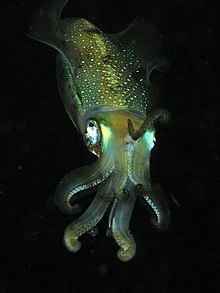
Back Malakologie Afrikaans علم الرخويات Arabic Малакология Bashkir Малакалогія Byelorussian Малякалёгія BE-X-OLD Малакология Bulgarian Malacologia Catalan Malakologie Czech Malacoleg Welsh Malakologi Danish

Malacology[a] is the branch of invertebrate zoology that deals with the study of the Mollusca (mollusks or molluscs), the second-largest phylum of animals in terms of described species[1] after the arthropods. Mollusks include snails and slugs, clams, and cephalopods, along with numerous other kinds, many of which have shells. Malacology derives from Ancient Greek μαλακός (malakós) 'soft', and -λογία (-logía).
Fields within malacological research include taxonomy, ecology and evolution. Several subdivisions of malacology exist, including conchology, devoted to the study of mollusk shells, and teuthology, the study of cephalopods such as octopus, squid, and cuttlefish. Applied malacology studies medical, veterinary, and agricultural applications, for example the study of mollusks as vectors of schistosomiasis and other diseases.
Archaeology employs malacology to understand the evolution of the climate, the biota of the area, and the usage of the site.[citation needed]
Zoological methods are used in malacological research. Malacological field methods and laboratory methods (such as collecting, documenting and archiving, and molecular techniques) were summarized by Sturm et al. (2006).[2]
Cite error: There are <ref group=lower-alpha> tags or {{efn}} templates on this page, but the references will not show without a {{reflist|group=lower-alpha}} template or {{notelist}} template (see the help page).
- ^ "Home – Division of Invertebrate Zoology". Archived from the original on 2007-02-08. Retrieved 2007-02-08.
- ^ Charles F. Sturm; Timothy A. Pearce; Ángel Valdés (July 2006). The mollusks. Universal-Publishers. ISBN 978-1-58112-930-4. Archived from the original on 2022-10-22. Retrieved 2022-08-22.
© MMXXIII Rich X Search. We shall prevail. All rights reserved. Rich X Search